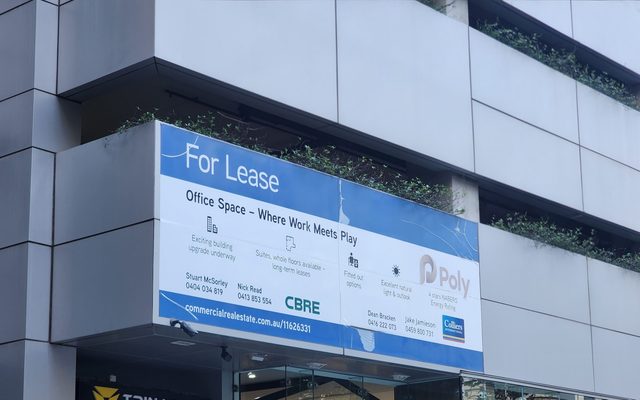This article is from the Australian Property Journal archive
THE national office vacancy rate held steady in the March quarter, but “virtually all” relocating businesses are moving to higher-quality spaces as a trifurcation of the market accelerates, according to new JLL research.
Positive net absorption of 33,300 sqm was recorded over the first quarter, with the vacancy rate remaining at 14.7%.
Across Australia’s CBD office markets, JLL recorded 190,300 sqm of prime net absorption and negative net absorption of 233,700 sqm in secondary grade assets in the 12 months to March.
“Virtually all organisations that relocate move into higher quality office accommodation,” said JLL head of research – Australasia, Andrew Ballantyne said.
“This is leading to a trifurcation in office markets. The highest quality buildings have strong occupancy rates, A-grade and upper B-grade are competing on the level of amenity/sustainability credentials and an increasing number of lower quality assets is where we see structural vacancy.”
He said organisations have been observing changes in workplace patterns and have more confidence in what their occupational footprint will look like moving forward.
“We see more conviction in decision-making and the positive net absorption result highlights the net balance of organisations are seeking more office space.”
JLL head of office leasing – Australasia, Tim O’Connor said leasing enquiry and activity is positive across most office markets and the strong prime grade net absorption result “highlights that organisations understand the important role office space plays in the attraction and retention of knowledge workers.”
However, options are drying up. Project completions across the whole Australian office market over the 2025 to 2026 period are just 50% of the long-term average.
“Competition for space is not a phrase we have used since late 2019, but it is starting to become relevant again,” O’Connor said.
Sydney records strongest absorption
The Sydney CBD recorded the strongest net absorption result, of 13,500 sqm, driven by 61,500 sqm of net absorption prime grade assets, compared with a contraction for secondary grade assets of 48,100 sqm.
Connor said the Sydney CBD net absorption result was supported by a reduction in overall sublease availability. Several organisations saw their return-to-office rate improve in the first part of 2024, and decided they require space previously offered to the sublease market, he said.
The Melbourne CBD recorded positive net absorption of 8,100 sqm over the quarter, also supported by a reduction in sublease availability.
“While Melbourne still lags other Australian cities, we see improved utilisation rates and improved office leasing enquiry,” O’Connor said. Melbourne CBD pedestrian counts increased over the second half of 2023 and this has continued into 2024.
The Adelaide CBD followed its very strong 2023 of 46,000 sqm positive net absorption with an above-trend net absorption result in the March quarter of 11,000 sqm. Similar prime net absorption was 73,700 sqm, heavily outperforming the secondary market over 12 months, with the latter recording 22,500 sqm.
“Adelaide is exposed to growth sectors of the domestic economy. This exposure is reflected in leasing enquiry and activity, with defence-related organisations active in Q1,” Ballantyne said.
The Brisbane CBD recorded an eighth successive quarter of positive net absorption, at 1,100 sqm, and its headline vacancy tightened to 11.0%. The prime grade vacancy rate moved even tighter to 9.2% – its lowest level since the end of 2019 – driving prime gross effective rents up by 12.4%.
The Brisbane near city market is following a similar trend to the CBD, recording positive net absorption of 70,000 sqm and prime gross effective rental growth of 6.4% over 12 months.
Canberra recorded a modest positive net absorption figure of 900 sqm in the March quarter,. underpinned by prime net absorption of 4,300 sqm.
The Perth CBD was the only office market to record negative net absorption in the March quarter, at negative 1,300 sqm, solely attributable to secondary grade assets as prime net absorption was 2,600 sqm.




